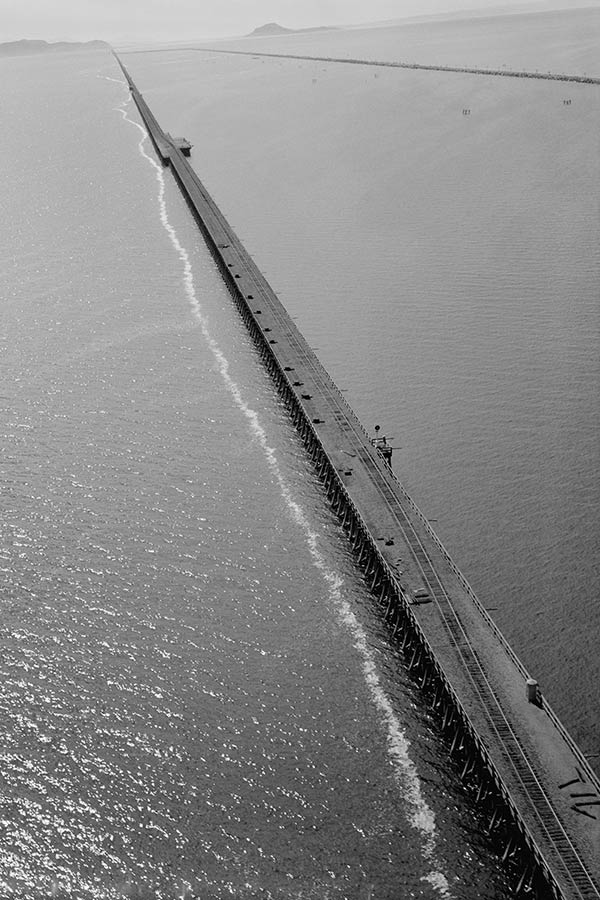- 6 easy ways to help wildlife on Earth Day (and the rest of the year, too!)
- Record $4.8 million raised for habitat restoration, other wildlife projects through 2023 conservation permits
- DWR hosting first desert tortoise viewing event
- DWR confirms beavers killed by disease; urges public to report any dead beavers
- Come see great blue herons in the wild at upcoming DWR event
- Found a baby bird on the ground? Here's what to do
- DWR issues fishing emergency closure at Panguitch Lake due to public safety concerns
- DWR conservation officers seeking information after bald eagle shot near Cedar City
Wood

The Lucin Cutoff, part of the wooden trestle bridge across the Great Salt Lake, was used from the early 1900s until the late 1950s.
Photo courtesy Library of Congress, Prints and Photograph Division HAER: UTAH,2-BRICI,3-5.
The first transcontinental railroad in North America, which linked the east coast of the United States to the recently discovered gold in the west, was completed at Promontory Summit on May 10, 1869. The remote location, just north of the Great Salt Lake, includes the Golden Spike National Historic Site, named after the final golden spike that was laid.
Three decades later, the Southern Pacific Railroad Company decided to abandon the original line, which went up and around the lake, and build a shorter line directly through the lake. Due to the limited resources, technology and money available at the time, building through the lake was widely considered a joke; however, the new line, known as the Lucin Cutoff, was completed and operational by March 1904.
The portion of the Lucin Cutoff that extended over the Great Salt Lake consisted of causeways and a 12-mile wooden trestle bridge. The tresle, made from Douglas Fir timbers and Redwood decking, began to deteriorate amidst the harsh conditions of the lake and was replaced in the late 1950s by a causeway built alongside it.
Much of the original railroad, including the line that had passed through Promontory Summit, was stripped of iron for the war effort during World War II. The tresle bridge, meanwhile, remained standing but was barely used.
In the 1990s, Cannon Structures purchased all of the trestlewood from the old bridge and began to reprocess and reclaim it for myriad items. The bridge has been dismantled and removed, and Cannon continues to sell the salvaged wood to construction companies and the public as decorative flooring, walls, cabinets, siding and other supplies.
This wood, with its old holes where railroad spikes were once planted, and its unique color from the lakewater's high salinity (known as "pickled" piling), is a unique piece of the Great Salt Lake's history.
More about the old trestlewood bridge
For more about the history of the railroad bridge and additional examples of modern products made from the reclaimed treslewood, watch the video below:
















